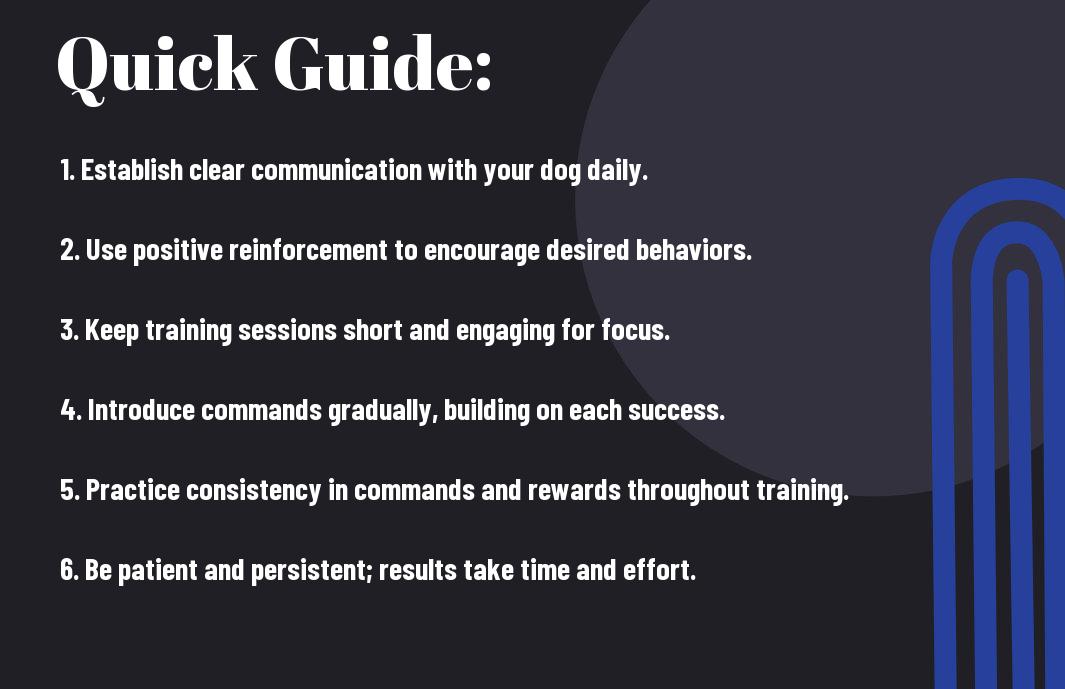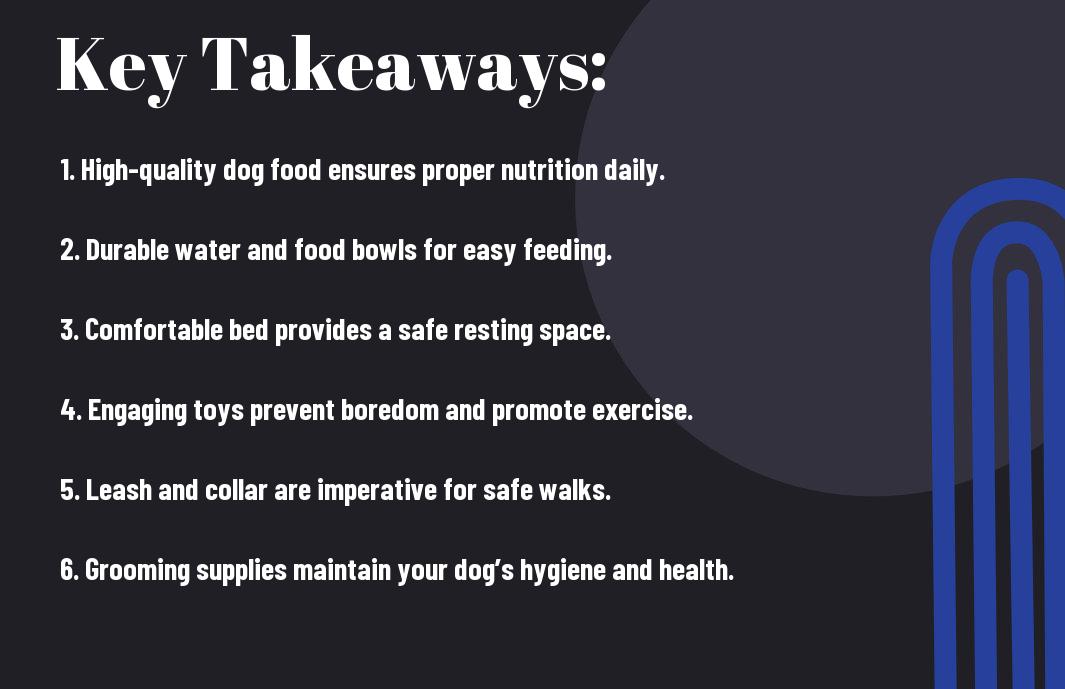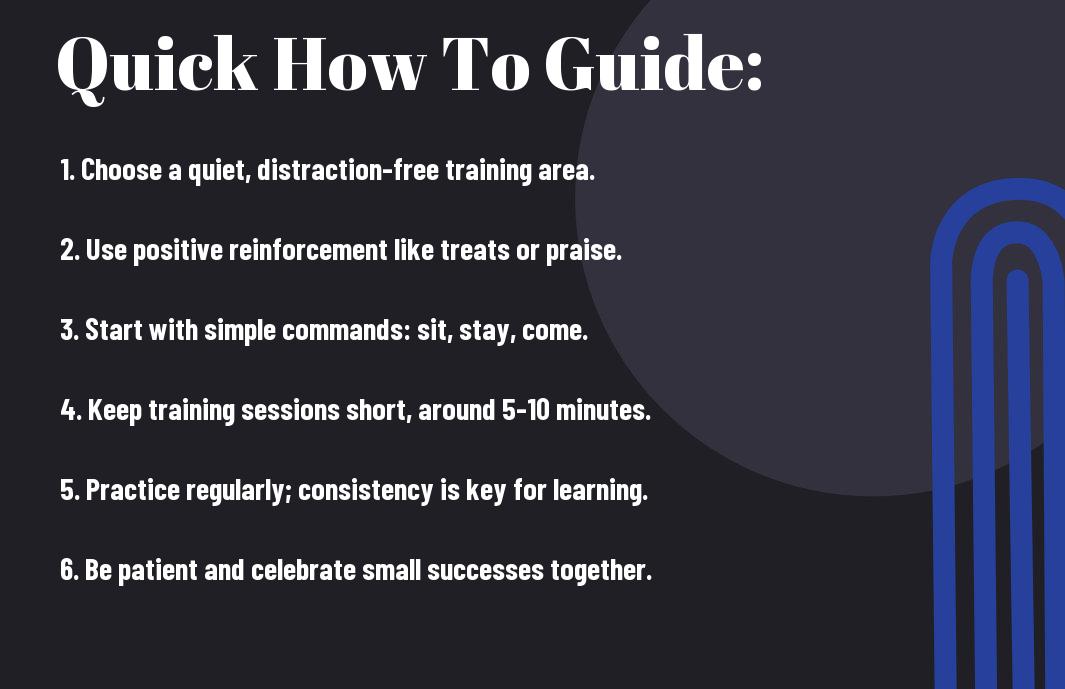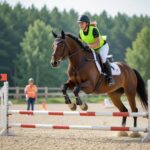Dog training is an crucial part of building a bond between you and your furry friend. To achieve the best results, you need to focus on effective techniques and avoid common pitfalls. This guide will outline the key dos, such as using positive reinforcement, and don’ts, like employing harsh punishment methods. By adhering to these guidelines, you’ll create a more harmonious environment and a well-behaved companion who is both happy and responsive to your commands.
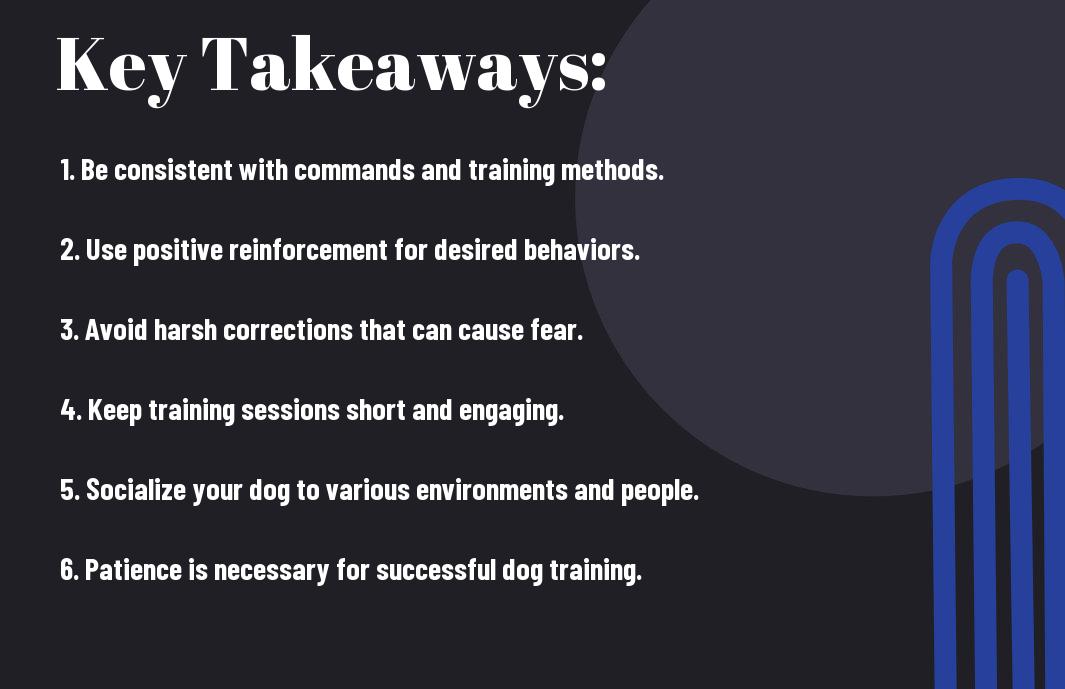

Understanding Your Dog’s Behavior
The key to successfully training your dog lies in understanding their behavior. While each dog is unique, they all share common instincts and communication methods that you can learn to interpret. By paying attention to your dog’s body language and becoming familiar with their signals, you can create a stronger bond and more effective training sessions. A well-understood dog is not only easier to train but also more confident and happier.
Canine Body Language
Dogs communicate primarily through body language, and recognizing these non-verbal cues is vital. For example, a wagging tail does not always indicate a happy dog; the position of the tail, the speed of the wag, and the overall posture of your dog all tell you different stories. When your dog approaches you with a relaxed body, ears in a neutral position, and a wagging tail at mid-height, they are likely feeling friendly and comfortable. Conversely, if your dog has a stiff body, raised hackles, and a lowered tail, they may be feeling stressed or threatened.
In addition to tail movements, other behaviors such as changes in ear position, blinking, yawning, and face licking can convey vital information about your dog’s emotional state. Staying observant and learning these cues can help you respond appropriately and train your dog more effectively.
Common Behavioral Issues
With various factors influencing behavior, many dogs develop common issues that can hinder their training. Some of these include excessive barking, destructive chewing, and jumping on people. These behaviors often result from boredom, anxiety, or a lack of proper training. Understanding why your dog is engaging in these behaviors is the first step toward addressing them. Moreover, tackling these issues early can prevent them from becoming ingrained habits.
Behavioral issues can stem from many sources including lack of exercise, insufficient mental stimulation, or past traumas. Identifying the root causes of these behaviors is vital in training effective solutions. Take the time to explore activities and environments that can alleviate anxiety or boredom; this could be a structured daily routine or engaging your dog in interactive play.
The Importance of Socialization
Above all, socialization plays a fundamental role in developing your dog’s behavior and confidence. Exposing your dog to different environments, people, and other animals helps them become well-rounded and adaptable. A well-socialized dog is less likely to display fear or aggression towards unfamiliar situations, creating a more enjoyable life for both of you. It’s vital to introduce new experiences gradually and positively, ensuring they are enriching rather than overwhelming.
At every stage of your dog’s life, from puppyhood to adulthood, socialization should be ongoing. Regularly exposing your dog to various sights, sounds, and faces will not only build their confidence but also strengthen your bond with them. Incorporating socialization into your training routine can make all the difference in creating a well-behaved companion.
Training Basics
Now that you have an understanding of the importance of dog training, it’s time to examine into the fundamentals. Above all, grasping the basics of dog training will set you on the path to having a well-mannered companion. Various techniques can be employed to achieve effective training outcomes.
Types of Training Techniques
There are a variety of training techniques that you can use when working with your dog. Each technique can yield different results depending on your dog’s personality, learning style, and your own training goals.
| Positive Reinforcement | Rewards desired behaviors with treats, praise, or play. |
| Clicker Training | Utilizes a sound to mark the exact behavior at the right moment, followed by a reward. |
| Leash Training | Teaches your dog to walk calmly on a leash without pulling. |
| Obedience Training | Focuses on teaching basic commands such as sit, stay, and come. |
| Socialization | Exposes your dog to different environments, people, and animals to reduce anxiety. |
- Choose a technique that suits your dog’s personality.
- Set clear goals for your training sessions.
- Use consistent commands and signals to avoid confusion.
- Be patient and give your dog time to learn.
- This ensures effective communication between you and your canine friend.
Establishing a Training Routine
Training your dog effectively requires consistency in establishing a routine. You’ll want to set aside specific times each day dedicated to training sessions. This provides both you and your dog with structure and helps to reinforce learning.
Training sessions should be short, ideally between 5 to 15 minutes, especially for puppies. Daily practice is key, and finding the right balance works best. Doing so in a distraction-free environment will help your dog focus, enhancing their understanding of commands during quieter moments.
Due to the nature of dog behavior, you will find that establishing regular training sessions can lead to improved obedience and a stronger bond between you and your dog. Consistent repetition of commands and actions will deepen your dog’s familiarity and comfort with learning.
Essential Commands Every Dog Should Know
One necessary aspect of dog training is teaching your canine companion basic commands. These commands form the foundation of good behavior and safety, making it easier for you to communicate with your dog. Key commands include sit, stay, come, leave it, and down.
A dog that responds to these necessary commands is not only a safer pet, but a more well-adjusted member of your family. Training your dog to master these basic commands will enhance your ability to control them in various situations, particularly in potentially dangerous scenarios like heavy traffic or encounters with other dogs.
The Dos of Dog Training
Many dog owners begin on the journey of training their furry companions with the desire for a well-behaved pet. To achieve this, there are several important dos that can be incredibly beneficial. You must implement these strategies effectively to foster a long-lasting bond with your dog while encouraging positive behavior.
Be Consistent
Among the key aspects of successful dog training is consistency. Dogs thrive on routine and clear expectations, so establishing a uniform set of commands and cues is imperative. This means using the same words and actions each time you communicate with your dog. For example, if you decide to use the word “sit,” make sure you use it consistently in every training session.
Furthermore, consistency should extend to all family members interacting with your dog. If one person allows the dog to jump on them while another discourages it, your pet will become confused about what is acceptable behavior. Thus, all family members should be on the same page to ensure that your dog has a clear understanding of what you expect from them.
Use Positive Reinforcement
Around the world of dog training, positive reinforcement stands out as one of the most effective methods. This approach involves rewarding your dog for displaying desirable behaviors, thereby encouraging them to repeat those actions in the future. Rewards can be treats, praise, or playtime, and it’s imperative to find what motivates your dog the most to ensure successful reinforcement.
Considering positive reinforcement helps create a loving and trusting relationship between you and your dog. When they associate training with fun and pleasant experiences, they will be more eager to learn. A dog trained with positive reinforcement will likely exhibit improved retention and responsiveness, leading to better overall behavior and a stronger bond with you.
Keep Training Sessions Short
At times, less is more when it comes to training your dog. Keeping your training sessions short prevents frustration for both you and your dog, as lengthy sessions can lead to boredom or fatigue. Aim for sessions that last no longer than 5 to 10 minutes, especially for young puppies or new learners, as they tend to have shorter attention spans.
Positive behavioral change happens in small increments, so frequent, shorter sessions tend to be more effective than longer, infrequent ones. By gradually building on what your dog learns during these sessions, you can create lasting habits and make the training process more enjoyable for both you and your canine companion.
Be Patient
Behind every successful dog training journey lies the virtue of patience. Dogs are not robots; they are individuals, each with their unique personalities and learning speeds. It is imperative to approach training with an understanding that some commands may take longer for your dog to grasp than others. Avoid becoming frustrated if your dog does not pick up a command as quickly as you would like.
The key to achieving progress lies in your ability to remain calm and positive throughout the training process. With consistent practice and reassurance, your dog will gradually learn and improve. Be attuned to your dog’s emotional state, and offer praise and encouragement whenever they show effort, regardless of whether they fully succeed at first.
End on a Positive Note
Along the training journey, always strive to end on a positive note. Concluding a session with a success, whether that is a learned command or a well-performed trick, reinforces a positive association with training. It leaves your dog feeling accomplished and eager for the next session, which helps foster motivation and excitement for learning.
Also, don’t hesitate to offer extra praise or a small reward at the end of each session. This reinforcement leaves your dog with a sense of achievement, encouraging their desire to engage in future training sessions with you. A positive conclusion is key to making your dog look forward to training rather than view it as a chore.
Don’ts of Dog Training
For anyone commenceing on the journey of dog training, it is imperative to understand several don’ts that can hinder your progress and affect the bond between you and your dog. By avoiding these common pitfalls, you can create a more positive and effective training environment.
Avoid Physical Punishment
Against popular belief, using physical punishment is not an effective means of training your dog. Such methods can result in fear, aggression, and anxiety, leading to behavioral issues that could manifest later. Instead of teaching your pet what to avoid, it may simply cause confusion and distrust towards you.
Moreover, physical punishment can damage the trust that you have built with your dog, which is vital for effective training. Positive reinforcement techniques, such as treats and praise, will yield better long-term results and strengthen your relationship.
Do Not Yell or Use Harsh Words
Words matter. Yelling or using harsh language can make your dog feel scared, anxious, or defensive. Instead of inspiring positive change, it can lead to misunderstandings and a breakdown of communication between you and your pet. Your dog may not understand what they did wrong, leading to unwanted behaviors rooted in fear of your reaction.
Additionally, a calm and gentle tone encourages your dog to respond positively, reinforcing good behavior more effectively than harsh words ever could. With consistent, kind communication, your dog is more likely to listen and learn.
In addition, harsh words can damage the bond you have with your dog. A trusting relationship is fostered through patience and understanding, and when a dog feels safe, they are more likely to learn and engage during training sessions.
Don’t Expect Immediate Results
Results take time. Training your dog is a gradual process that requires patience and consistency. Expecting immediate obedience can lead to frustration for both you and your dog. Training is not only about commands; it involves building a relationship and understanding your dog’s needs and behavior.
Furthermore, each dog learns at their own pace. Some may pick up commands quickly, while others may need more time. It’s imperative to celebrate small achievements along the way rather than fixating on the end goal.
Plus, allowing your dog to learn at their own pace fosters a more enjoyable training experience for you both. Shifting your expectations to embrace gradual improvement can result in a more fulfilling bond and effective training sessions.
Avoid Distractions During Training
By eliminating distractions, you create a focused learning environment that allows your dog to concentrate on what you are teaching them. This means choosing a quiet space free from other pets, loud noises, and busy environments. When your dog is not overwhelmed with stimuli, they can better respond to your commands.
Creating a distraction-free zone might require you to be aware of your surroundings and plan your training times accordingly. Achieving a calm atmosphere is imperative for effective learning, as it allows your dog to focus solely on you.
Also, starting in a familiar space with minimal distractions can help build your dog’s confidence and reinforce positive behaviors. As they become more skilled, you can gradually introduce more challenging environments to test their training progress.
Do Not Compare Dogs
One of the biggest mistakes you can make is comparing your dog to others. Each dog is unique, with their own temperament, history, and learning style. When you set unrealistic expectations based on another dog’s abilities, you may inadvertently set your own dog up for failure.
| Comparison Risks | Benefits of Individual Training |
|---|---|
| Increases frustration and anxiety for both you and your dog | Fosters a supportive relationship based on understanding |
| Undermines your dog’s unique strengths and skills | Encourages tailored training that works for your specific dog |
Harsh judgments aimed at your dog based on another’s skills can lead to broader behavioral issues and a lack of motivation to learn. Focus on celebrating your dog’s journey and progress, even if it looks different than others’ experiences.

Common Training Mistakes
Your dog training journey can be filled with challenges, and understanding what pitfalls to avoid is key to achieving success. Common training mistakes can hinder your progress and cause frustration for both you and your furry companion. By identifying these missteps, you can create a more effective and harmonious training experience.
Ignoring Behavioral Cues
Along with your dog’s training sessions, you should pay close attention to their behavioral cues. Dogs communicate through body language, and failing to recognize these signals can lead to misunderstandings. For instance, if your dog shows signs of stress or reluctance, such as cowering or turning away, it’s necessary to reassess your training methods and tailor them to suit your dog’s comfort level.
Recognizing behavioral cues is also vital for ensuring your dog’s well-being. Ignoring these signs can exacerbate anxiety and lead to further behavioral issues. To create a productive training environment, always be attentive to how your dog responds, adapting your approach accordingly.
Using Conflicting Commands
Training your dog requires consistency, and using conflicting commands can create confusion. If you give different commands for the same action or use varying tones for similar phrases, your dog will struggle to understand what you want. This uncertainty can stall their learning process and may lead to frustration on both sides.
In addition, make sure that everyone in your household is on the same page regarding commands. If different family members use different words or gestures for the same command, it can lead to mixed messages. Establishing a uniform approach to commands is vital in helping your dog learn effectively.
Overloading Commands in One Session
To ensure your dog grasps new commands quickly, it’s important to avoid overloading them with too many commands in a single session. Dogs have short attention spans, and trying to teach multiple commands at once can overwhelm them, leading to confusion and ineffective learning. A focused approach, where you introduce one command at a time, creates a more digestible learning experience.
Using repetition and patience allows your dog to master one command before moving on to the next. This method not only enhances their understanding but also strengthens your bond as they achieve success one step at a time.
Failing to Practice
Behind every effective training program is consistent practice. If you neglect to reinforce commands and behaviors regularly, your dog may forget what they’ve learned. It’s vital to integrate training into your daily routine, implementing short practice sessions that reinforce their skills in different environments. Routine practice helps solidify their learning and boosts their confidence in responding to commands.
Moreover, practicing in various settings prepares your dog to respond well regardless of distractions. Regularly scheduled practice not only enhances their obedience but also strengthens your relationship as you work together towards common goals.
Not Rewarding Good Behavior
On your training journey, failing to reward good behavior can significantly hinder your dog’s motivation to learn. Recognition is vital; positive reinforcement encourages your dog to repeat the desired actions. When your dog successfully follows commands or exhibits appropriate behavior, be sure to reward them immediately with treats, praise, or affection. This connection between the action and positive feedback can accelerate their understanding and performance.
Additionally, the lack of rewards can lead your dog to feel disheartened or disengaged. Without understanding the benefits of good behavior, they may not find it rewarding to follow commands. By consistently rewarding good behavior, you create a more enjoyable and productive training environment for both you and your dog.
Common training mistakes can impede your progress, ensuring you are aware of these pitfalls allows you to create a more effective training strategy. By focusing on positive reinforcement, consistent commands, and understanding your dog’s cues, you can foster a successful training journey.
Advanced Training Techniques
Unlike basic obedience, advanced training techniques take your dog’s learning to a whole new level. By incorporating various methods, you can create a well-rounded training plan that addresses the specific needs and behaviors of your dog. Here’s an outline of advanced techniques you can implement:
- Obedience Training
- Agility Training
- Trick Training
- Service Dog Training
- Behavior Modification Techniques
| Technique | Description |
| Obedience Training | Focuses on teaching commands and ensuring reliable responses. |
| Agility Training | Enhances speed and coordination through obstacle courses. |
| Trick Training | Encourages creativity and bonding by teaching fun tricks. |
| Service Dog Training | Prepares dogs for task-oriented assistance to their owners. |
| Behavior Modification Techniques | Adds techniques to manage and improve unwanted behaviors. |
Obedience Training
One of the cornerstones of advanced training is obedience training, which involves teaching your dog commands like “sit,” “stay,” and “come.” This type of training focuses on establishing clear communication between you and your dog. It lays the groundwork for every other type of training you will pursue. When your dog understands basic commands, you can build on this foundation to address more complex behaviors and commands.
This training should be consistent and positive, with plenty of reinforcement. Utilizing treats, praise, and playtime as rewards helps reinforce the behaviors you’re teaching. By associating good behavior with positive outcomes, you encourage your dog to repeat those behaviors in the future.
Agility Training
After establishing a solid foundation with obedience, agility training introduces an exciting way for your dog to stay active and engaged. This involves navigating obstacle courses that may include jumps, tunnels, and weave poles. Agility training enhances your dog’s physical fitness while improving their mental acuity, as they must navigate the course and respond to your commands in real-time.
In fact, agility training can be beneficial for all dogs, regardless of breed or age. It not only promotes a healthy lifestyle but also strengthens your bond as you work towards mutual understanding and cooperation. Whether you choose to compete in agility courses or simply enjoy the activity at home, it provides a fun outlet for both you and your dog.
Trick Training
Agility training can be complemented by trick training, which teaches your dog a variety of fun and impressive behaviors, from rolling over to playing dead. This method emphasizes positive interaction and enhances the playful bond you share with your dog. Trick training also stimulates your dog’s mind, making it an excellent exercise for their cognitive abilities.
A myriad of tricks can be introduced, allowing you to personalize training to suit your dog’s interests and abilities. By using a variety of tricks, you can keep training fresh and engaging, ensuring your dog looks forward to each session.
Service Dog Training
Service dog training, unlike other forms of training, is focused on teaching your dog to assist a person with disabilities. This can include guiding individuals who are visually impaired, alerting people with hearing impairments, or providing companionship to individuals with emotional challenges. The training is comprehensive and tailored to the specific needs of the individual.
Understanding how to effectively train a service dog means grasping that it requires extensive time, patience, and dedication. Each service dog must possess a strong temperament and be able to perform specific tasks reliably, which involves rigorous training protocols that help ensure safety and effectiveness.
Behavior Modification Techniques
Trick training can also play an crucial role in behavior modification. By teaching your dog fun tricks, you can redirect unwanted behaviors into positive outcomes. This technique involves analyzing the triggers that lead to behavioral issues and replacing those cues with rewarding interactions.
Even in challenging cases, behavior modification can be effective. By employing positive reinforcement strategies, you can help your dog learn alternative behaviors that are more acceptable, ultimately enhancing their well-being and your relationship together.
Resources for Dog Training
To help you navigate the world of dog training, it’s important to explore various resources that can enhance your experience and effectiveness. Whether you prefer reading, online programs, professional help, or mobile apps, there are countless options to suit your training needs. With the right resources, you can build a strong foundation for a well-behaved, happy dog.
Recommended Books
Across the myriad of dog training literature, several books stand out for their practical advice and proven techniques. Popular titles include “The Power of Positive Dog Training” by Pat Miller and “Don’t Shoot the Dog!” by Karen Pryor. These books emphasize the importance of positive reinforcement and offer you a solid framework for understanding your dog’s behavior.
Furthermore, consider “Dog Training For Dummies” by Jack and Wendy Volhard, which provides a comprehensive guide for both new and experienced dog owners. These resources can empower you with knowledge and strategies that cater to your unique dog-training journey.
Online Training Programs
Books can be a great source of information, but they are just one method of training your dog. Online training programs have gained popularity for their convenience and accessibility. Many reputable trainers offer video tutorials, interactive modules, and live sessions to cater to your schedule and learning style, allowing you to train at your own pace.
Indeed, platforms like Zak George’s Dog Training Revolution and Karen Pryor Academy offer flexible courses designed to teach you effective training techniques while accommodating your dog’s individual needs. These programs often provide a wealth of information, allowing you to build a strong bond with your pup while learning from the comfort of your home.
Professional Trainers
Between choosing between various resources, some situations may call for enlisting the skills of a professional dog trainer. A qualified trainer can tailor a training program specific to your dog’s behavior and your training goals, ensuring effective communication and understanding between you and your pet.
Considering the different training methods available, it’s important to select a trainer who aligns with your values. Observe their techniques and methods to ensure they focus on *positive reinforcement* and humane training practices that create a positive experience for both you and your dog.
Dog Training Classes
By enrolling in dog training classes, you gain the dual benefit of professional guidance and the experience of training in a group environment. Socialization is a key aspect of dog training, and classes provide opportunities for your dog to interact with other dogs, helping to build their social skills alongside obedience training.
Further, many training centers offer classes tailored to specific needs, such as puppy training, obedience, or specialized advanced skills. This variety ensures that you can find a class that meets both you and your dog’s requirements while fostering a strong partnership through collaborative learning.
Useful Apps for Training
Around the digital landscape, you can also find an array of mobile apps designed to enhance your dog training experience. Tools like “Pupford,” “Dogo,” and “Woofz” offer training tutorials, tracking systems, and progress logs, keeping you organized and motivated as you work with your furry friend.
Classes, along with mobile app resources, can provide you with instant access to training tips and techniques, enabling you to reinforce your dog’s learning anytime and anywhere. With these tools at your fingertips, you can create a comprehensive training regimen that fits your lifestyle and meets the needs of your dog.
Q: What are some effective training methods for teaching my dog basic commands?
A: Effective training methods include positive reinforcement, which involves rewarding your dog with treats, praise, or playtime when they successfully follow a command. Consistency is key—use the same command words and gestures for each action. Training sessions should be short, typically around 5 to 10 minutes, to keep your dog engaged. Practice in a quiet environment free from distractions, gradually introducing new commands as your dog masters the basics.
Q: How should I handle my dog’s mistakes during training?
A: It’s important to handle mistakes with patience and a positive attitude. Instead of punishing your dog for errors, redirect their behavior and provide guidance. If your dog doesn’t understand a command, go back a step and reinforce what they’ve previously learned. Always focus on the behavior you want to encourage, and avoid negative reactions. Ending training sessions on a positive note can help maintain your dog’s enthusiasm for learning.
Q: What are some common mistakes to avoid when training my dog?
A: Some common mistakes include using inconsistent commands, which can confuse your dog. Additionally, training should never involve physical punishment or harsh discipline, as this can damage the bond of trust between you and your dog. Avoid prolonged training sessions that may lead to boredom or frustration; keeping training fun and varied will encourage your dog to engage and learn more effectively. Lastly, ensure that training is a positive experience, offering plenty of encouragement and rewards for their efforts.
